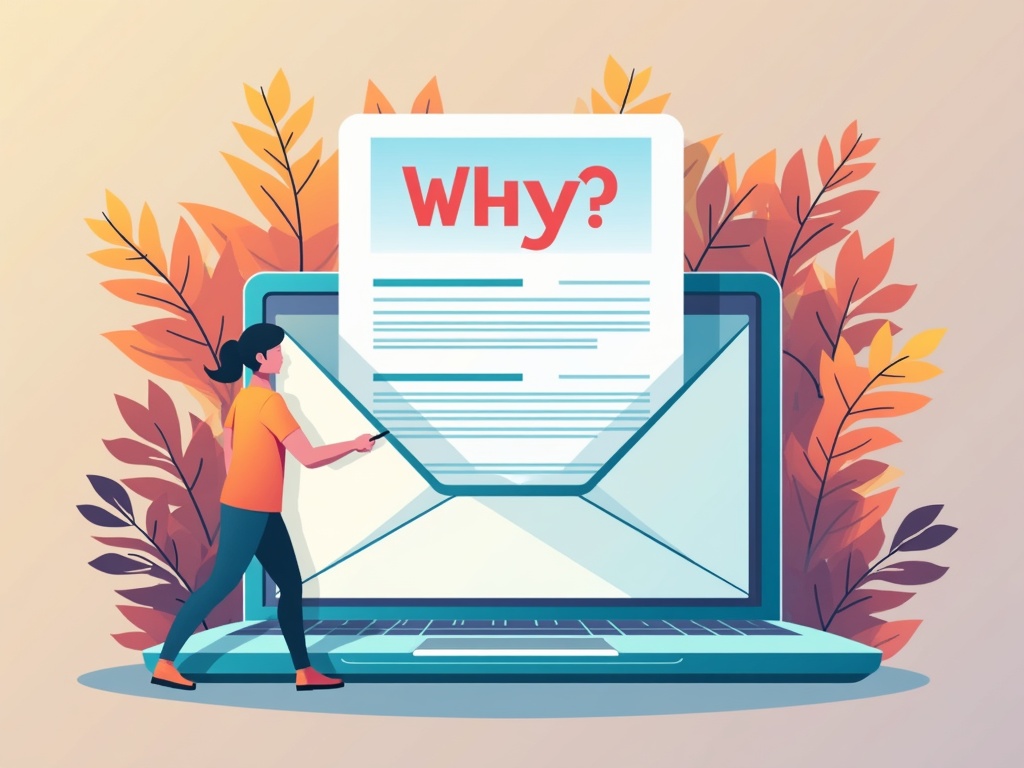How to Design a Professional Email Template That Converts
Imagine this: you've poured hours into crafting the perfect email, a message brimming with value for your subscribers. Yet, when it lands in their inbox, it's met with a collective yawn, immediately relegated to the digital abyss. Why? Often, the culprit isn't the message itself, but the messenger – the email template. A poorly designed template screams amateur, while a professional one whispers trust and authority. This guide unveils the secrets to crafting email templates that not only look stunning but also drive conversions.
Why a Professional Email Template Matters
Before diving into the how-to, let's solidify the *why*. A professional email template is more than just window dressing; it's a cornerstone of effective email marketing. Here's why you should invest time and thought into its design:
- Builds Brand Recognition: Consistent use of your brand's colors, logo, and style creates a cohesive experience, reinforcing brand identity with every interaction.
- Enhances Credibility: A well-designed template projects professionalism and trustworthiness, making recipients more likely to engage with your content.
- Improves Readability: Clear formatting, strategic use of white space, and legible fonts guide the reader's eye and ensure your message is easily digestible.
- Drives Engagement: Compelling visuals, strategically placed calls to action (CTAs), and mobile optimization encourage clicks and conversions.
- Saves Time and Resources: A reusable template streamlines the email creation process, saving time and ensuring brand consistency across all campaigns.
Key Elements of a Professional Email Template
A winning email template isn't about flashy graphics or complex coding. It's about striking the perfect balance between aesthetics and functionality. Here are the core elements to consider:
1. Header: Branding at First Glance
The header is the first thing recipients see, so make it count. It should prominently feature your logo and brand name, ideally linking back to your website. Keep it clean and uncluttered; avoid overwhelming the reader with too much information.
2. Body: Content is King (and Queen)
This is where your message lives. Prioritize readability with these design choices:
- Font Selection: Choose fonts that are easy to read on both desktop and mobile devices. Sans-serif fonts like Arial, Helvetica, and Open Sans are generally considered safe bets. Limit yourself to one or two font families for a consistent look.
- Font Size and Line Height: Use a font size that's comfortable to read (14-16px is a good starting point) and adjust the line height to create adequate spacing between lines of text.
- Whitespace: Don't underestimate the power of whitespace. It helps to break up large blocks of text, making your email easier on the eyes.
- Images and Visuals: High-quality images can enhance your message and capture attention. Use them strategically to illustrate your points, showcase your products, or add visual interest. Always optimize images for web use to minimize file size and loading time.
3. Footer: The Finishing Touch
The footer is prime real estate for essential information and legal compliance. Include the following:
- Unsubscribe Link: A clearly visible unsubscribe link is legally required and builds trust. Make it easy for recipients to opt out of your list.
- Contact Information: Provide your company's physical address and contact email address.
- Social Media Links: Encourage recipients to connect with you on social media by including links to your profiles.
- Copyright Notice: Protect your content with a copyright notice.
4. Calls to Action (CTAs): Guiding the Reader
Every email should have a clear purpose, and your CTAs should guide the reader towards that goal. Whether it's visiting your website, making a purchase, or signing up for a webinar, your CTAs should be:
- Prominent: Use contrasting colors, button styles, and strategic placement to make your CTAs stand out.
- Action-Oriented: Use strong verbs that encourage clicks, such as Shop Now, Learn More, or Get Started.
- Concise: Keep your CTA text short and to the point.
Step-by-Step Guide to Designing Your Email Template
Now that you understand the key elements, let's walk through the process of designing your professional email template:
1. Define Your Brand Identity
Before you start designing, take a step back and define your brand identity. Consider your brand's values, target audience, and overall aesthetic. This will inform your design choices, ensuring your email template aligns with your brand image.
- Color Palette: Choose a color palette that reflects your brand. Limit yourself to 2-3 primary colors and a few accent colors.
- Typography: Select fonts that are consistent with your brand's personality.
- Imagery: Determine the style of images you'll use in your emails. Will they be professional product shots, lifestyle images, or illustrations?
2. Choose an Email Marketing Platform
Several email marketing platforms offer drag-and-drop template builders, making the design process accessible even to those without coding experience. Popular options include:
- Mailchimp
- Constant Contact
- Sendinblue
- GetResponse
- Klaviyo
Consider your budget, features, and ease of use when choosing a platform. Many offer free trials or basic plans, allowing you to test them out before committing.
3. Start with a Template (or Build from Scratch)
Most email marketing platforms offer a library of pre-designed templates that you can customize to fit your brand. This is a great option if you're short on time or lack design experience. Alternatively, you can build a template from scratch, giving you complete control over every element.
4. Customize the Header
Upload your logo, add your brand name, and choose a background color that complements your brand. Ensure your logo links back to your website.
5. Design the Body
Experiment with different layouts, fonts, and colors to create a visually appealing and easy-to-read design. Use whitespace strategically to break up text and guide the reader's eye. Incorporate high-quality images to enhance your message.
6. Craft Compelling CTAs
Design eye-catching buttons with clear and concise text. Use colors that contrast with the background to make them stand out. Place your CTAs strategically throughout the email, ensuring they're easy to find and click.
7. Create the Footer
Add your unsubscribe link, contact information, social media links, and copyright notice. Keep the footer clean and uncluttered.
8. Optimize for Mobile
With a significant portion of emails being opened on mobile devices, it's crucial to ensure your template is responsive and looks great on all screen sizes. Most email marketing platforms offer mobile preview tools that allow you to see how your email will appear on different devices.
9. Test, Test, Test!
Before sending your email to your entire list, send test emails to yourself and colleagues to check for errors in formatting, links, and functionality. Test your email on different devices and email clients to ensure it displays correctly.
Best Practices for Professional Email Template Design
Beyond the basic elements, here are some best practices to elevate your email template design:
- Maintain Brand Consistency: Use the same colors, fonts, and imagery across all your emails to reinforce brand recognition.
- Use a Consistent Layout: Establish a consistent layout for your emails to create a predictable and user-friendly experience.
- Keep it Simple: Avoid overwhelming your recipients with too much information or too many design elements. Focus on clarity and simplicity.
- Optimize Image Sizes: Large images can slow down loading times and negatively impact the user experience. Optimize your images for web use to minimize file size.
- Use Alt Text for Images: Alt text is a short description of an image that displays if the image fails to load. It also improves accessibility for visually impaired users.
- Personalize Your Emails: Use personalization tokens to address recipients by name and tailor your content to their interests.
- Segment Your Audience: Segment your email list based on demographics, interests, and purchase history to send more targeted and relevant emails.
- Track Your Results: Monitor your email open rates, click-through rates, and conversion rates to identify what's working and what's not. Use this data to optimize your email templates and campaigns.
Common Email Template Design Mistakes to Avoid
Even with the best intentions, it's easy to make mistakes when designing email templates. Here are some common pitfalls to avoid:
- Using Too Many Images: Excessive use of images can slow down loading times and trigger spam filters.
- Using Large Images: As mentioned before, large images are a no-no. Optimize!
- Ignoring Mobile Optimization: Failing to optimize for mobile devices is a major blunder. Test your email on different devices to ensure it looks great on all screen sizes.
- Using Inconsistent Fonts: Using too many different fonts can create a cluttered and unprofessional look. Stick to one or two font families.
- Not Including an Unsubscribe Link: This is illegal in many jurisdictions and can damage your sender reputation.
- Making it Difficult to Unsubscribe: Hiding the unsubscribe link or making it difficult to unsubscribe is a surefire way to annoy your subscribers and damage your brand.
- Neglecting Alt Text: For accessibility, always use alt text for images.
By following these guidelines, you can sidestep common errors and craft email templates that resonate with your audience.
Examples of Successful Email Template Design
To illustrate the power of effective design, let's look at a couple hypothetical examples:
- E-commerce Brand: A clothing retailer uses a clean, minimalist template with high-quality product photography. The template features a prominent CTA button that encourages recipients to Shop Now. The email is also personalized with the recipient's name and includes recommendations based on their past purchases.
- Software Company: A software company uses a modern, visually appealing template to announce a new product launch. The template features a short video that showcases the product's features and benefits. The email also includes a clear CTA button that encourages recipients to Learn More and a link to sign up for a free trial.
Level Up with A/B Testing
Even with a great design, understanding what resonates most with your audience requires testing. A/B testing involves creating two versions of your email template (Version A and Version B) with slight variations in design elements, such as:
- CTA Button Color: Test different colors to see which generates more clicks.
- Image Placement: Experiment with placing images above or below text.
- Headline Copy: Vary the wording of your headlines to see which resonates most with your audience.
By tracking the results of your A/B tests, you can continuously optimize your email templates for maximum performance. Many email marketing platforms offer built-in A/B testing tools, making it easy to track the performance.
Conclusion: Your Template, Your Voice
Designing a professional email template isn't a one-time task; it's an ongoing process of refinement and optimization. By following the guidelines outlined in this guide and continuously testing your designs, you can create a template that not only looks great but also drives results. Remember, your email template is an extension of your brand. Make it reflect your values, resonate with your audience, and help you achieve your marketing goals.

